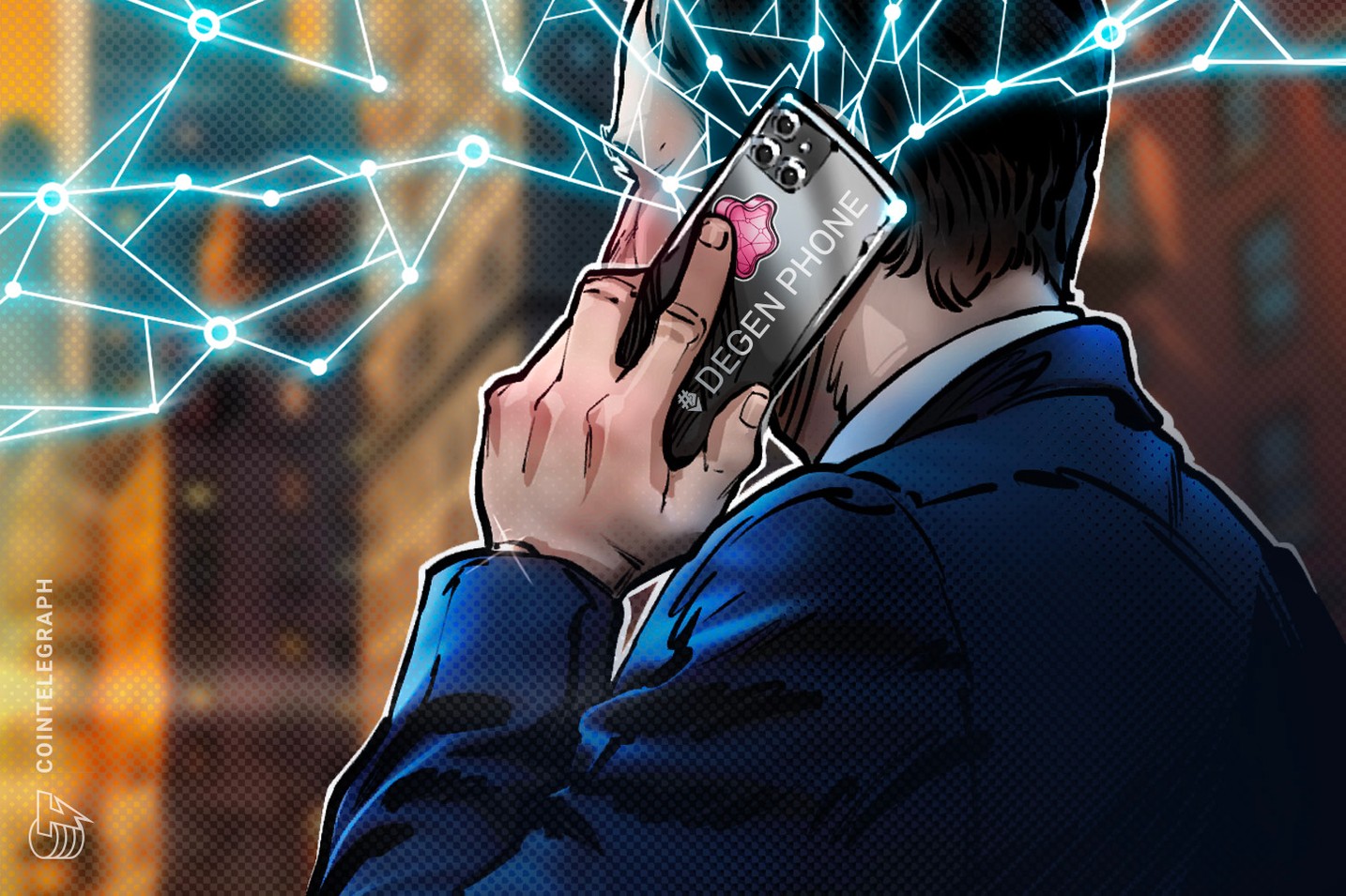Sponsored Content
As part of an emerging “TeleFi” trend that intersects with real-world asset (RWA) tokenization, Degenphone is linking real eSIMs to NFTs to create ownable and tradable European mobile numbers, providing a layer of KYC-free privacy for users.
Blockchain technology has demonstrated a pattern of disrupting established industries by introducing decentralized alternatives to centralized inefficiencies. This phenomenon occurred in finance (DeFi), gaming (GameFi) and social media (SocialFi).
Now, attention is turning to the telecommunications sector, leading to the emergence of “TeleFi” — the integration of blockchain, DeFi and telecom services at the consumer level. Sitting at the intersection of real-world assets (RWA) and decentralized physical infrastructure networks (DePIN), the core idea behind TeleFi is to transform how users interact with telecommunications products, shifting from a model of renting services to one of owning assets.
In traditional telecom, users pay recurring fees for numbers they never truly own, lack control over associated data and cannot easily transfer or monetize the value tied to their digital identity. TeleFi explores ways to change this dynamic through tokenization and decentralization. The first TeleFi project was Fragment, which launched 130,000 numbers just for verification on Telegram.
Another project exploring this new intersection is Degenphone, a platform that combines eSIM technology with non-fungible tokens (NFTs) to create a new model for mobile number ownership and privacy. It leverages partnerships with established players like telecommunications company eSIM Plus and messenger app Nicegram.
Shifting from rental to ownership
Degenphone connects eSIM technology with NFTs, turning a digital token into a functional European mobile number. Users can acquire an NFT number either by participating in initial sales pools or by purchasing on a secondary marketplace, without Know Your Customer (KYC) verification.
Once a user holds a Degenphone NFT in their crypto wallet, they can verify ownership via the official website or a Telegram Mini App. This verification grants access to an interface for receiving SMS messages to that number.
Users can register for online services like social networks or messengers without exposing their primary phone number, adding a layer of privacy and data protection. When the number receives its first SMS, the NFT is considered “unpacked,” a status recorded in offchain metadata associated with the token.
Your Degenphone NFT isn't just a picture that points to a phone number.
— Degenphone (@degenphone) October 19, 2025
The NFT is the phone number.
Transfer the NFT = transfer the number.
Sell the NFT = sell the number.
Hold the NFT = control the number.
It's the actual asset pic.twitter.com/01msu0bkxc
This model represents a shift from the traditional telecom structure, where users essentially rent numbers from carriers. With Degenphone, the number is represented by an NFT that the user owns and can freely trade on a marketplace.
The concept is partly inspired by Fragment.com, the first TeleFi platform that launched virtual, NFT-based anonymous numbers specifically for Telegram verification. It initially sold at modest prices of around $50 but saw significant interest, appreciating to over $1,000. Unlike Fragment, where numbers remain purely virtual, Degenphone utilizes real eSIMs linked to actual mobile numbers, and the total supply is capped.
Outlining the barriers that the next generation of TeleFi solutions like Degenphone will face, eSIM Plus CEO Dina Tsybulskaya said:
“While tokenizing phone numbers may sound like the next logical step in telecom innovation, we shouldn’t overlook the regulatory and operational complexities that come with it. In an industry where compliance, lawful interception and user protection are tightly controlled, full decentralization could raise more questions than it answers.”
Tsybulskaya also touched upon the ideal principles that such solutions would require to be successful:
“The key challenge will be finding a balance, embracing the spirit of Web3 while fully respecting the legal frameworks that ensure both trust and sustainability of the TeleFi model.”
Traction and future developments
The initial batch of Degenphone numbers, launched on the TON blockchain, reportedly sold out in minutes, with 1,100 NFTs issued in the first mint and a current total supply of around 3,000 unique numbers. To celebrate the launch, the project hosted a trading contest on its native marketplace. Degenphone is now preparing for its next launch on the Solana blockchain, scheduled for Oct. 23.
Degenphone is coming to @solana
— Degenphone (@degenphone) October 20, 2025
The first phone numbers you can mint, use, and trade on Solana.
23 Oct, 17:00 UTC https://t.co/a0Gur2ZQm6 pic.twitter.com/zoL6Edn79u
Looking ahead, the Degenphone roadmap includes plans for a mobile app with calling functionality, an API for AI agents, number rental options and potentially a hardware wallet capable of receiving SMS directly.
The team also intends to develop crosschain capabilities, allowing the NFT numbers to be moved and traded across different blockchain ecosystems. This expansion reflects a broader vision of integrating telecom assets more deeply into the Web3 world, making them globally accessible.
Degenphone explores how eSIM and NFT technologies can be combined to create new tools for managing digital identity and enhancing private communications. Such integrations represent a step toward a future where core digital identifiers like phone numbers become user-owned assets within the Web3 ecosystem.
However, the shift from viewing a phone number as a rented utility to a tradable digital asset requires a significant change in consumer behavior. Whether users will widely embrace the concept of buying, holding and trading their phone numbers like NFTs, particularly considering the personal nature of such identifiers, remains an open question that will likely be answered as the TeleFi market grows and projects like Degenphone test real-world adoption.
Disclaimer. Cointelegraph does not endorse any content or product on this page. While we aim at providing you with all important information that we could obtain in this sponsored article, readers should do their own research before taking any actions related to the company and carry full responsibility for their decisions, nor can this article be considered as investment advice.
